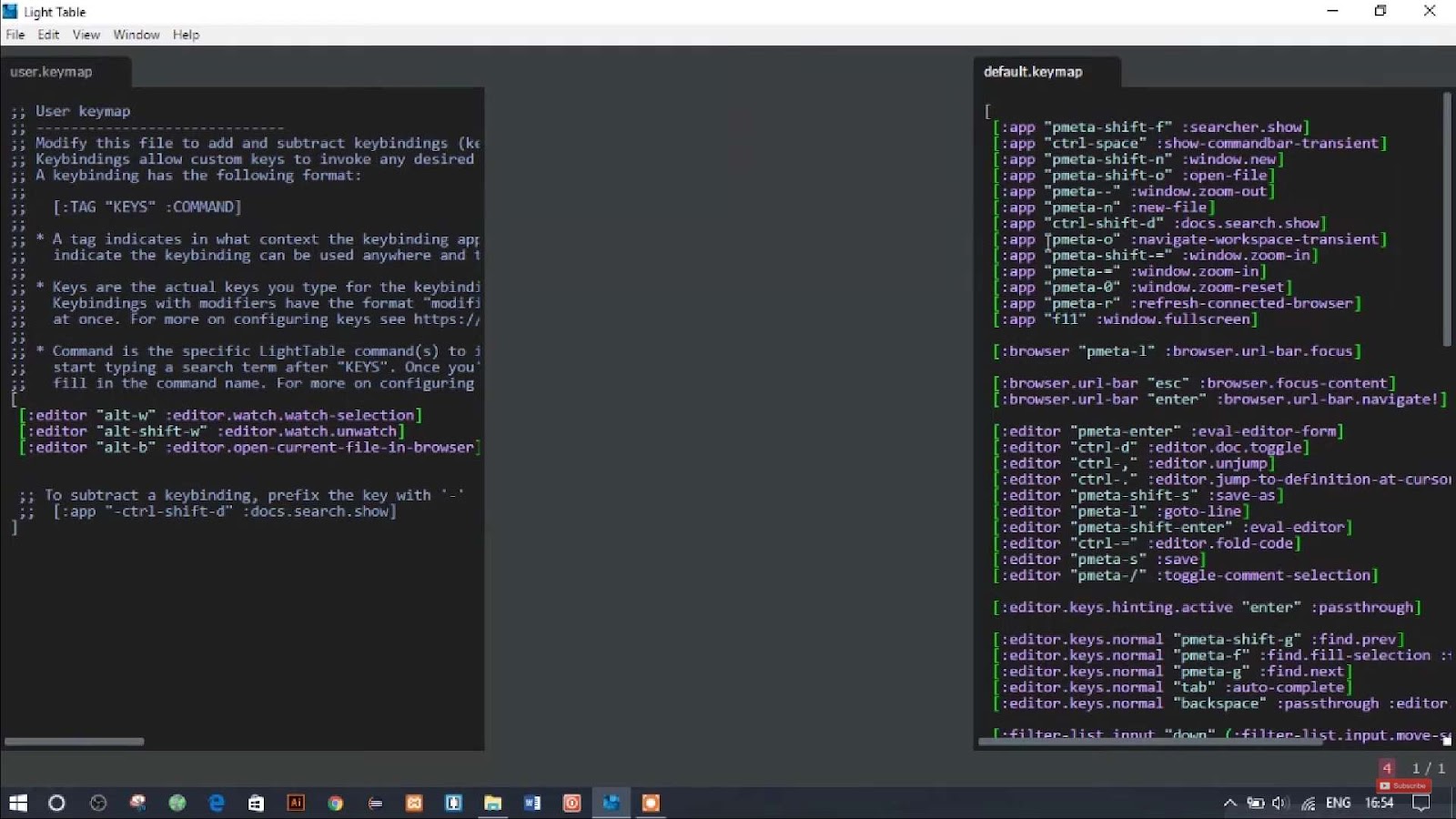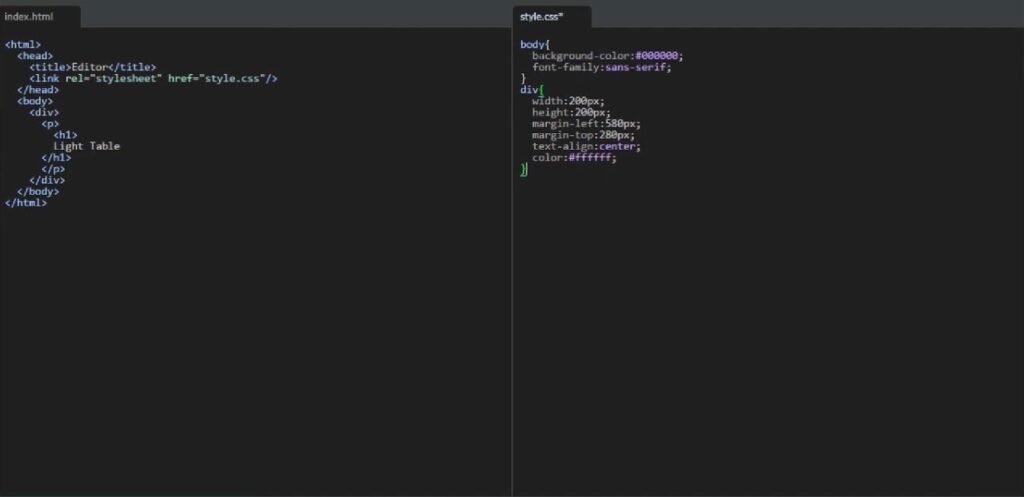
Exploring Light Table Integration
Let’s proceed to dissect Light Table, exploring its features one by one.
Optimizing Your Workspace: Harnessing the Power of Light Tables
In this article, we will introduce you to an extensive guide on effectively utilizing a light table to improve productivity. The light table demonstration reveals how placing the cursor on top of method calls results in the documentation being presented on the side. This feature has been touted as innovative, but some have pointed out its resemblance to the functionality of familiar software like Eclipse and its JavaDoc view.
However, the two aren’t directly analogous. Here is why:
- Screen Utilization: In the Light table demo, the documentation panel occupies a significant portion of the screen. In contrast, the JavaDoc view in Eclipse allows users to adjust the size of the documentation panel and dock it wherever they please. This customizing feature allows you to maximize your workspace and adapt it to your needs;
- Accessibility of Documentation: The phrase ‘docs everywhere’ can be misleading in the context of light tables. To view the documentation, you must navigate to a dedicated ‘doc’ tab. This implies that the documentation doesn’t remain universally accessible on the screen. Rather, users must switch to a dedicated ‘documentation mode’.
By contrast, Eclipse’s JavaDoc view offers more flexibility. It can remain open and can be docked and resized at your convenience to ensure continuous access to the documentation.
This comparison is not to suggest that one is superior to the other. Both tools have unique features that can be beneficial based on individual requirements. The key is to understand the functionalities of the light table and learn how to use it most efficiently. The following sections will delve deeper into optimizing the utilization of a light table to boost your productivity. So, let’s get started!
Accessing Functions and Classes: Unveiling the Dynamic Workspace
In coding languages like Java, users often need to refer to classes rather than functions. This preference stems from the fact that a function name alone may not provide sufficient insight into the code structure. Why? Because several classes can contain functions with identical names. Moreover, simply examining standalone functions might not offer a complete picture of the task at hand. Often, developers prefer to review the fields of a class for a better understanding of the code.
This notion might give rise to a common question: How do you find a class or a function effectively in your workspace? The answer lies within your Integrated Development Environment (IDE). Today’s IDEs, including Eclipse, offer a wealth of features to enhance your coding experience and make the process of locating classes or functions a breeze.
Let’s break down these features:
What’s The Big Deal About Showing Classes And Functions?
In Eclipse, you can access classes or functions rapidly by using the shortcut Ctrl+Shift+T. This feature offers the ability to type the class name directly, add wildcards, or even include package names for more precise results. The best part? This is not a recent innovation. This functionality has been available for over a decade in most IDEs!
How Can Showing Classes or Functions Revamp Your Coding Experience?
The ability to display classes and functions effortlessly significantly optimizes your coding process. Not only does it save time, but it also improves the code’s readability by providing a holistic understanding of the class fields.
Consider these tips while working with classes and functions:
- Use descriptive names for your classes and functions. This not only makes your code more readable but also makes finding functions and classes easier;
- When searching for a class or a function, use wildcards for a more extensive search. This is especially useful when you don’t remember the exact name;
- Regularly update your IDE to leverage the latest features and improvements. This includes better search functionality, enhanced compatibility, and increased efficiency.
Coding does not have to be a strenuous process. With the right tools and knowledge, you can navigate through your workspace effortlessly and focus more on the actual coding. Consider the aforementioned tips the next time you find yourself looking for a class or a function. Happy coding!
Navigating the Abstract with the Concrete: The File-less Experience
In the tech realm, there’s an ongoing conversation about the role of files in development procedures. Some argue for developers to interact less with files and more with structural elements of the code, endorsing a more fluid approach to coding. This concept is appealing in theory—it presents a more streamlined and intuitive coding experience. But does it hold up in practice?
The reality is that files remain integral to several key development processes, including version control systems. Of course, modern Integrated Development Environments (IDEs)—think Eclipse, IntelliJ, Visual Studio—do offer views that prioritize the structural components of your code over the underlying files. This feature can enhance your perception of the code and its interconnected parts. However, when it comes to editing, IDEs will generally bring original files back into play.
Let’s explore some aspects you should consider when navigating this file-less approach:
Adjusting to the Abstract: The Learning Curve
The initial pivot from a file-based approach can be challenging. Developers must familiarize themselves with a new way of viewing code—a transition that could disrupt existing workflows. Therefore, if your team is considering the shift, be prepared for a potential learning curve and provide adequate training resources.
Examining Long Functions: Managing Screen Real Estate
The demonstration of the file-less approach focuses on small function calls set in individual editing areas. What happens when code gets longer, though? Juggling multiple long functions in singular editing windows could lead to a resizing jumble, continually adjusting window sizes to accommodate code visibility—this balancing act is often referred to as ‘resizing hell’.
Consider the following strategies to tackle this hurdle:
- Promote modular development: Encourage the team to write smaller, self-contained functions. Modular development not only simplifies code management but also improves code reusability and readability;
- Leverage split view: Many IDEs allow a split view of editors, minimizing the need for constant resizing. This feature allows developers to view and edit multiple files or functions side by side.
In summary, while the concept of a file-less approach to coding can offer a cleaner and more focused development experience, it presents its own set of challenges. Developers must remain open to shifting their perspectives—and workflows— to make the most of this approach. Remember that the ultimate aim is to create robust and maintainable code, regardless of the methodology you choose. Happy coding!
Real-Time Code Feedback: Debunking Myths and Bridging Gaps
The allure of real-time feedback in code editing is clear: it promises ease of use, rapid code validation, and a streamlined coding process. It stands as a revolutionary prospect, but is it achievable in its purest form?
Workflows of developers involve complex operations and interactions that extend beyond the IDE’s scope, casting doubt on the practicality of instant feedback as a universally applicable tool.

Let’s delve into the considerations in achieving real-time feedback:
Effect on System-Level Operations
Imagine a code snippet that initiates file deletion or fires off a series of emails each time a method call is entered. It wouldn’t be practical—or safe—to invoke these operations during writing or code inspection. Instead, these actions need to drive by explicit user command and not at the whim of a keystroke.
Considerations when handling system-level operations:
- The need for safeguards: The IDE would need to be intelligent enough to distinguish between code that could have system-level implications and code that doesn’t. This balancing act would involve sophisticated rule setting and exception handling—a feat that may not be achievable with our current technology;
- The sheer volume of APIs: With a vast number of APIs, manually flagging those that might require special handling seems impractical. An alternative would need to consider automated flagging based on specific features of the API—an approach that brings its challenges.
The Intricacies of Real-World Code
Remember that code often intertwines with real-world complexities—multiple objects interacting with numerous external systems, data inputs from networks, handling multi-threading, and more. These intricate scenarios would defy the concept of ‘instant feedback,’ as executing the code in such instances would depend on conditions outside the immediate code snippet and the IDE’s control.
Handling Computationally Intensive Operations
Even if the code only involves basic primitives, the idea of ‘instant feedback’ may falter in the face of computationally intensive operations or long, uninterrupted loops. The code execution would consume significant system resources, potentially leading to undue system lag or unresponsiveness.
Hence, the vision of real-time feedback must couple with a pragmatic understanding of the intricacies of code execution. Developers and tool creators must work hand-in-hand to balance the promise of instantaneous feedback with the realities of complex, interwoven, and impactful code.
Conclusion
While the initial impression of the light table demo may pique one’s interest, a thorough examination reveals that certain ideas, such as ‘documentation everywhere’ and the ‘find function,’ which are touted as revolutionary, have already been effectively integrated into various other Integrated Development Environments (IDEs).
The latter portion of the demonstration appears excessively forced and might appear appealing solely within the confines of a conceptual demonstration. However, the showcased examples do not appear to accurately mirror real-world coding scenarios. Moreover, a substantial explanation of how these challenges would be addressed in the ultimate implementation is conspicuously absent.